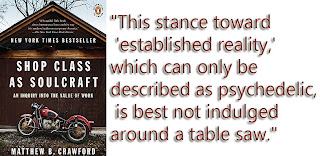 After enjoying The Perfect Vehicle so much I started on The Man Who Would Stop at Nothing. I sent the author a quick email saying how much I enjoyed The Perfect Vehicle and hoped she’d keep at writing so well about the craft of biking.
After enjoying The Perfect Vehicle so much I started on The Man Who Would Stop at Nothing. I sent the author a quick email saying how much I enjoyed The Perfect Vehicle and hoped she’d keep at writing so well about the craft of biking.
After ripping through the first couple of chapters I did what anyone in the information age would do and looked up what John Ryan is doing at the moment. The assumption was that he was making time somewhere and putting miles behind him.
I have a unique talent for lousy timing, and my starry eyed thanks to Melissa Holbrook Pierson for writing The Perfect Vehicle contained no idea of what was happening with her and motorbikes right now. She was very kind to right back so positively. More people should drop a line to the writers they enjoy and say thanks (says the English teacher).
John Ryan, the main focus of my current read, is a record breaking Iron Butt rider. He covered huge distances in record breaking time. I stumbled across the Iron Butt Association when I was planning my Lake Superior circumnavigation earlier this year, so Melissa’s latest book on this hidden subculture wasn’t completely new to me. As I was researching circling Superior I saw a blog post where the rider casually mentioned that he did it in less than 24 hours. I was astonished! And intrigued!
I’ve been greatly enjoying The Man Who Would Stop At Nothing so far, so much so that I wanted to link John’s blog to this one. That was when I discovered that he’d recently died in a seemingly benign road accident. I’m frustrated that he was rear ended by a cager in a Mustang, and that no other details of the accident are forthcoming.
So her e I am, a week later, mulling over John’s fate (yes, I’m a muller). There is no doubt that motorbiking is a dangerous pass-time, one that demands the utmost attention, and I now suspect a degree of fatalism. If John Ryan can be taken out by some idiot texting in his Mustang, so can we all.
e I am, a week later, mulling over John’s fate (yes, I’m a muller). There is no doubt that motorbiking is a dangerous pass-time, one that demands the utmost attention, and I now suspect a degree of fatalism. If John Ryan can be taken out by some idiot texting in his Mustang, so can we all.
I’ve been osculating between despair and bravado in responding to this. A small part of me wants to question what the point of it all is, and the other (larger) part is thinking, ‘fuckin’ ay! He died doing what he loved.” We should all be so lucky. I’ve lately had the fear that I’ll go shovelling the driveway, or be at work… how horrible!
In the book Melissa has a great quote: “Give your best years, your now, so that at some distant point, which may never in fact arrive, you can get all the pills you’ll need to extend your shuffle to the grave.” The fearful response to two wheeling is, I think, based on this truth that so many people live by.
Melissa also talks in great detail about the calculus of risk in riding. Knowing John as well as she did, I suspect she’d appreciate the fact that he left the world on two wheels, even while wishing he were still here.
I crossed the line a year ago when I decided to go take the course and get on two wheels. It’s approaching mid-winter here in Canada and that feeling of immersive freedom is as far away from me as it can get. I’m sorry that John is gone, and reading the rest of Melissa’s book is going to be tinged with that regret.
Does any of this stop me from getting back on two wheels as soon as I can? Not remotely.














 In schools we create artificial learning environments for our children that they know to be contrived and undeserving of their full attention and engagement… Without the opportunity to learn through the hands, the world remains abstract and distant, and the passions for learning will not be engaged – Doug Stowe (
In schools we create artificial learning environments for our children that they know to be contrived and undeserving of their full attention and engagement… Without the opportunity to learn through the hands, the world remains abstract and distant, and the passions for learning will not be engaged – Doug Stowe (
















































